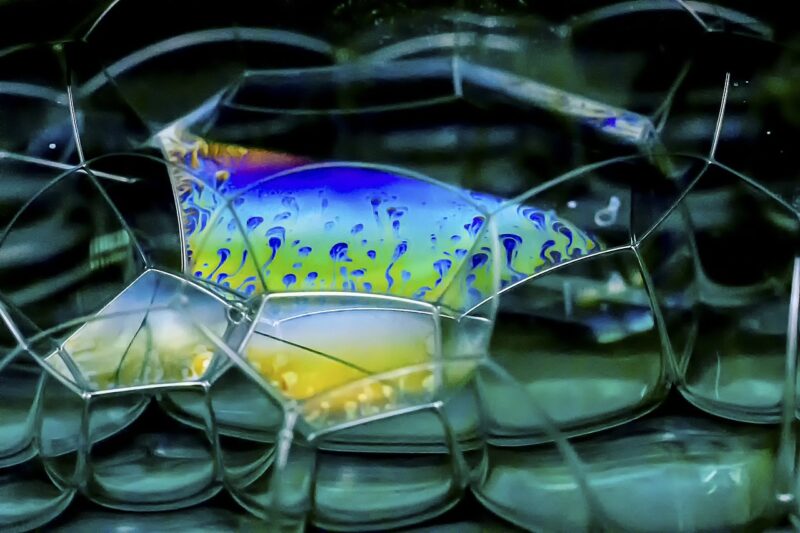How Soap Works: Breaking Down Dirt and Oil with Chemistry
November 16, 2024

Soap is something we often take for granted, but its significance in our daily lives cannot be overstated. Whether it’s cleaning our hands, dishes, or clothes, soap plays a crucial role in maintaining hygiene and cleanliness. However, not many are aware of the fascinating chemistry behind this ubiquitous household product. In this article, we’ll explore how soap works, the science of its ingredients, and why it effectively breaks down dirt and oil.
1. The History of Soap
Soap has been around for thousands of years, with historical evidence suggesting its use as far back as 2800 B.C. in ancient Babylon. The Babylonians created soap by mixing animal fats with ash, and they used it mainly for cleaning textiles and for medicinal purposes. The ancient Egyptians also recognized the cleansing properties of soap, and it was found in tombs dating back to 1500 B.C.
Fast forward to more recent history, and the production of soap took on a more scientific approach during the Middle Ages in Europe. The process of saponification became understood, which is the chemical reaction that produces soap when fats react with an alkali. By the 19th century, the advent of industrial chemical production made soap more widely available, leading to the variety of soap products we see today.
2. What is Soap Made Of?
At its core, soap is a salt of a fatty acid. Soap is typically made from fats and oils, which can be vegetable-based (like olive oil, coconut oil, or palm oil) or animal-based (like tallow or lard). The basic process of making soap involves two key ingredients:
- Fats or Oils: These provide the fatty acids essential for soap formation. Different oils yield different properties in the final soap product, from moisturizing qualities to lathering capability.
- Alkali: This is typically sodium hydroxide (lye) or potassium hydroxide, which facilitates the saponification process. When the alkali reacts with the fatty acids in the oils, soap is formed along with glycerin, a natural moisturizer.
The chemical structure of soap molecules is what makes them effective at cleaning.
3. The Science Behind Cleaning: Hydrophilic and Hydrophobic Ends
The magic of soap lies in its unique molecular structure. Soap molecules have two distinct ends:
- Hydrophilic Head: This end of the soap molecule is polar and attracted to water. It’s often referred to as “water-loving.”
- Hydrophobic Tail: This end is non-polar and repelled by water, making it “water-fearing.” However, it is attracted to oils and fats.
When soap is mixed with water, the hydrophilic heads align with the water molecules, while the hydrophobic tails are drawn to the grease and dirt. This interaction forms structures known as micelles – spherical formations where the hydrophobic tails trap the dirt and oil in the center, while the hydrophilic heads face outward towards the water.
4. How Soap Cleans: The Step-by-Step Process
To understand how soap cleans, let’s break down the process step-by-step:
1. **Application:** When soap is applied to a surface (like your hands or a dish), it begins to mix with any existing oils and dirt.
2. **Formation of Micelles:** The soap molecules surround the grease and dirt, forming micelles. The hydrophobic tails embed themselves in the dirt and oil, while the hydrophilic heads remain in the water, allowing the micelle to be suspended in the water.
3. **Rinsing Away:** When you rinse the surface with water, the soap molecules, along with the trapped dirt and oil in the micelles, wash away, leaving the surface clean.
This process effectively reduces the surface tension of water, allowing it to penetrate and lift away dirt more efficiently, highlighting why soap is so effective at cleaning.
5. The Role of Surfactants
Soap acts as a surfactant, which stands for “surface-active agent.” Surfactants reduce the tension between two surfaces, whether it’s oil and water or dirt and a surface. Surfactants are crucial in various cleaning products, including shampoos and detergents, as they aid in emulsifying oils and lifting dirt.
Even though soap has been utilized for centuries, knowing its mechanism gives us valuable insight into its continued relevance. Common synthetic surfactants have been developed, which often work even better than natural soap in certain applications, leading to a myriad of cleaning products available today.
6. Why Soap is Effective Against Germs
In recent years, with global health concerns on hygiene, the question of whether soap kills germs is crucial. While soap doesn’t necessarily kill bacteria and viruses outright, it is effective in removing them from surfaces. The process of washing with soap and water dislodges these pathogens, which can then be rinsed away.
Some studies have suggested that soap may even disrupt the outer membranes of certain types of viruses, rendering them inactive. This fact underscores the importance of handwashing with soap instead of relying on water alone.
7. Conclusion: The Ingenious Chemistry of Soap
Soap is not just a basic commodity; it’s an intelligent creation of chemistry. Understanding how soap works reveals the intricate science behind a simple act of washing. From its historical origins to the complex molecular interactions that occur during cleaning, soap remains a timeless solution for hygiene and cleanliness.
The next time you reach for a bar of soap or a bottle of liquid detergent, remember the fascinating chemistry at work that breaks down dirt and oil, ensuring we stay clean and healthy. Soap is a remarkable example of how chemistry can have a practical and positive impact on our everyday lives.







